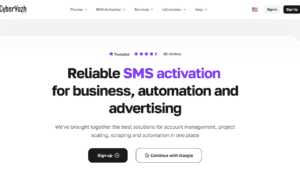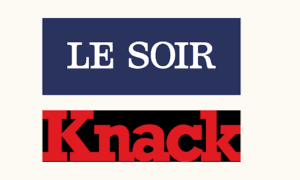Are you ready to unlock the secret behind skyrocketing sales and building lasting customer relationships? Look no further than the mighty world of email marketing! In this blog post, we’ll dive deep into the art of harnessing emails to drive e-commerce success. Whether you’re a seasoned business owner or just getting started, our expert tips and strategies will help transform your inbox into a goldmine of opportunities. Get ready to craft engaging campaigns, captivate your audience, and watch your revenue soar in this ultimate guide to mastering email marketing for e-commerce triumph. Let’s get started on revolutionizing your online business journey together!
Introduction
Email marketing has become a crucial aspect of e-commerce success in today’s digital era. With the rise of online shopping and the increasing use of technology, more and more businesses are leveraging email marketing to reach out to their customers. This powerful tool allows e-commerce businesses to connect with their target audience, build brand awareness, drive sales, and ultimately achieve business growth.
In this blog post, we will delve into the art of email marketing for e-commerce success and discuss tips and strategies that can help you maximize your efforts. Whether you are just starting with email marketing or looking to improve your current strategy, this article will provide valuable insights on how to effectively use email marketing for your e-commerce business.
Why is Email Marketing Important for E-Commerce Success?
With so many forms of digital communication available today, you might wonder if email marketing is still relevant. The answer is yes – email marketing remains one of the most effective ways for e-commerce businesses to engage with their customers.
Firstly, email has a wide reach – almost everyone has an email account and checks it regularly. This means that by using email as a channel for communication, businesses have the potential to reach a large number of people. Secondly, emails allow for personalized communication – unlike social media posts or website content that caters to a broad audience; emails can be tailored based on customer demographics or behavior data.
Moreover, through targeted campaigns and segmented lists, businesses can ensure that their message reaches not only the right people but also at the right time. This can greatly impact the effectiveness of marketing efforts and lead to higher conversion rates.
Additionally, email marketing is a budget-friendly option for e-commerce businesses, making it accessible for both small and large companies. With low costs, high ROI potential, and a plethora of data analytics tools available, email marketing provides an affordable yet effective way to drive sales and increase customer engagement.
Tips for Effective Email Marketing
Now that we have established the importance of email marketing in e-commerce, let’s dive into some tips that can help you make the most out of your campaigns:
1. Build a strong subscriber list: The success of your email marketing strategy depends on having a quality subscriber list. Invest time and effort in building your list organically by offering valuable incentives such as discounts or freebies to entice people to sign up.
2. Segment your subscriber list: As mentioned earlier, segmentation allows for personalized communication and more targeted campaigns that yield better results. Use data such as purchase history, browsing behavior, or demographics to divide your list into smaller groups and tailor messages accordingly.
3. Use compelling subject lines: With overflowing inboxes, it is crucial to capture the attention of readers with a compelling subject line that entices them to open your emails.
4 . Create engaging content: The content of your email should be relevant, valuable, and visually appealing to keep readers interested.
5. Include a clear CTA: Every email should have one clear call-to-action (CTA) that directs the reader to take a specific action, such as making a purchase or downloading a free guide.
6. Test and analyze: To improve the effectiveness of your campaigns, regularly test different elements such as subject lines, visuals, and CTAs, and analyze the results to see what works best for your audience.
The Importance of Email Marketing in E-commerce Success
Email marketing is vital for the success of any e-commerce business for several reasons:
1. Builds and Strengthens Customer Relationships:
One of the main advantages of email marketing is its ability to build and strengthen relationships with customers. By regularly communicating with them via email, businesses can keep their brand top-of-mind and create a sense of trust and familiarity with their customers. This can lead to increased customer loyalty and repeat purchases.
2. Highly Targeted:
Unlike traditional forms of advertising, email marketing allows businesses to reach out directly to individuals who have already shown interest in their products or services. With segmented lists and personalized messaging, businesses can tailor their emails based on customers’ interests, behavior, purchase history, etc., resulting in higher engagement rates.
3. Cost-effective:
Email marketing is relatively inexpensive compared to other forms of digital or traditional advertising methods. It eliminates printing and postage costs associated with direct mail campaigns while still being able to reach a wider audience instantly.
4. Measurable Results:
With various metrics such as open rates, click-through rates (CTRs), conversion rates, etc., businesses can easily track the performance of their email campaigns. This allows them to make data-driven decisions, optimize their strategies, and achieve better results.
5. Promotes Repeat Purchases:
Email marketing is an effective way to promote repeat purchases from existing customers. With targeted offers, discounts, and promotions, businesses can entice customers to make additional purchases and increase their lifetime value.
6. Increases Sales:
Through well-crafted emails that highlight new products, special offers, and promotions, businesses can effectively drive sales and revenue. With the right email marketing strategy in place, businesses can tap into potential customers’ buying intent and convert them into paying customers.
Understanding Your Target Audience
Understanding your target audience is crucial for the success of any email marketing campaign. Your target audience consists of the specific group of people who are most likely to be interested in your products or services. These individuals share common characteristics and behaviors, making them a valuable group for you to focus on when crafting your email marketing messages.
One way to understand your target audience is by creating buyer personas. A buyer persona is a detailed description of an ideal customer based on demographics, interests, and buying behavior. This includes information such as age, gender, location, profession, income level, education level, purchasing habits, pain points, goals and motivations.
To create accurate buyer personas for your e-commerce business, you can conduct market research using various methods such as surveys and interviews. You can also use analytics tools like Google Analytics or Facebook Insights to gather data on your website visitors and social media followers. With this information, you can build a clear picture of who your potential customers are and what drives their purchase decisions.
Once you have identified your target audience through buyer personas, it’s essential to understand their needs and preferences. For example, if you’re selling skincare products targeted towards women over 40 years old who live in cold climates; understanding that they may have dry skin due to environmental factors will help you tailor your email marketing messages accordingly.
Another key aspect to consider while understanding your target audience is their communication style. Different age groups or demographics may prefer different forms of communication such as formal emails versus casual social media posts.
Importance of knowing your audience in email marketing
Email marketing has become an essential tool for e-commerce success. It allows businesses to communicate with their customers directly and effectively, increasing brand awareness and driving sales. However, the effectiveness of email marketing depends greatly on knowing your audience. Without a clear understanding of who you are sending emails to, your campaign is likely to fall flat.
Knowing your audience in email marketing means understanding their demographics, preferences, behaviors, and needs. This information can help you create targeted and personalized messages that resonate with your subscribers and lead them towards making a purchase. Here are some reasons why knowing your audience is crucial for successful email marketing:
1. Increases Engagement: By having a clear understanding of your target audience, you can tailor your emails to include content that will be relevant and interesting to them. This leads to higher engagement rates as subscribers are more likely to open, read, and click through on content that speaks directly to their interests and needs.
2. Improves Email Deliverability: When you know your audience well enough, you can segment them into different groups based on factors such as location, age or purchase history. Segmenting helps ensure that the right message reaches the right people at the right time. Moreover, it prevents spamming subscribers with irrelevant content which could result in lower delivery rates.
3. Drives Conversions: A well-segmented email list allows for precise targeting which means sending highly-relevant offers or product recommendations based on customer behavior or preferences mentioned in their past interactions with your brand via emails or website . This helps convert leads into buyers as subscribers are more likely to make a purchase when they feel the content is designed specifically for them.
4. Builds Brand Loyalty: Personalizing your emails based on subscriber interests and preferences can help build trust and loyalty with your brand. When subscribers feel that you understand them and cater to their needs, they are more likely to remain loyal customers in the long run.
5. Provides Insights for Future Campaigns: Knowing your audience also means understanding their responses to different types of email campaigns. By analyzing the performance of past campaigns, you can gain insights into what works and what doesn’t for each segment of your audience. This information can be used to improve future email marketing strategies.
How to gather customer data
Collecting customer data is a crucial aspect of email marketing for e-commerce success. It allows you to understand your audience, personalize your messaging, and drive conversions. By gathering relevant customer information, you can create targeted campaigns that resonate with your subscribers and entice them to make a purchase. In this section, we will discuss how to gather customer data effectively.
1. Use sign-up forms on your website: The most common way to collect customer data is through sign-up forms on your website. These forms can be placed strategically on landing pages or pop-ups to capture the attention of visitors and entice them to subscribe. Make sure the form is easy to fill out and asks for essential details like name, email address, and location.
2. Offer incentives for signing up: To encourage more people to provide their information, offer an incentive in exchange for their email address. This could include a discount code, free shipping, or a freebie with their first purchase. Not only does this help in collecting data but also gives customers an extra reason to make a purchase.
3. Leverage social media: Social media platforms are an excellent resource for gathering customer data. You can use polls or surveys on platforms like Facebook or Instagram stories to ask questions and get insights into what your audience wants.
4. Utilize feedback forms: Customer feedback is invaluable when it comes to understanding their needs and preferences. Including a short feedback form at the end of each transaction can give you valuable insights into what they liked about their experience and what can be improved.
5. Conduct market research: You can also gather customer data through market research surveys. You can send out surveys via email or post them on your website or social media channels to get a better understanding of your target audience, their preferences, and behaviors.
6. Use Google Analytics: Google Analytics is a powerful tool that provides valuable data about your website visitors. It gives you insights into the demographics, interests, and behaviors of your audience, helping you understand them better.
7. Invite customers to create an account: Encourage customers to create an account on your website by offering benefits such as storing their details for faster checkout and receiving personalized recommendations. This not only helps in gathering data but also makes the purchasing process smoother for customers.
8. Monitor social media mentions: Keep an eye on what people are saying about your brand on social media. It can give you valuable insights into customer opinions, needs, and complaints.
9. Use cookies and tracking pixels: Cookies can track visitor behavior on your site, allowing you to learn more about their interests and preferences. Similarly, tracking pixels on social media platforms can provide information about user behavior outside of your website.
10. Partner with other businesses: Collaborating with complementary businesses can help in reaching a broader audience and expanding your customer base. You can also gain insights into their customers’ preferences and interests through these partnerships.
Building Your Email List
One of the most crucial aspects of email marketing for e-commerce success is building a strong and engaged email list. This is because your email list serves as one of your direct lines of communication with potential customers, allowing you to reach them directly in their inbox and build a more personal relationship with them. In this section, we will discuss some effective strategies for building an email list that can drive conversions and increase sales.
1. Make it easy to subscribe:
The first and most important step in building your email list is making it easy for people to subscribe. This means having prominent opt-in forms on your website, landing pages, blog posts, and social media platforms. These forms should be visually appealing and straightforward, with a compelling call-to-action (CTA) that entices visitors to sign up for your emails.
2. Offer something valuable:
People are more likely to subscribe to your emails if they feel they are getting something valuable in return. Consider offering an incentive such as a discount code, free shipping, or exclusive content to encourage visitors to join your email list.
3. Leverage social proof:
Social proof refers to the influence created when others validate or endorse a product or service. You can leverage social proof by showcasing customer testimonials or including numbers of subscribers on your opt-in forms or pop-ups.
4. Use exit-intent pop-ups:
Exit-intent pop-ups appear when a visitor’s cursor moves towards the close button on their browser tab signaling their intention to leave the site. These pop-ups can be used to offer an incentive or prompt visitors to subscribe to your email list before they leave, increasing your chances of conversion.
5. Utilize landing pages:
Landing pages are standalone web pages designed with focused content and a conversion goal in mind. They are an effective tool for capturing email addresses since they are specifically designed to convince visitors to take a specific action, such as subscribing to your email list.
6. Host giveaways and contests:
Giveaways and contests can be an effective way to not only attract new subscribers but also engage your existing ones. Encourage participants to enter by subscribing to your email list and sharing the contest with their networks.
7. Optimize your website for mobile:
With more people accessing the internet through their mobile devices, it is crucial to have a responsive website that provides a seamless experience across all devices. If your website is not optimized for mobile, you may be missing out on potential customers who prefer browsing and shopping on their phones.
8. Segment and personalize:
Segmenting your email list based on customer interests, behaviors, or demographics can help you personalize your messages and increase engagement rates. This means sending tailored emails that resonate with each segment instead of blanket promotions that may not appeal to everyone.
9. Leverage partnerships:
Collaborating with other businesses or influencers in your niche can help you reach a new audience and potentially gain new subscribers. Consider partnering up for a joint email campaign or hosting a guest post on each other’s blogs to increase your reach.
10. Keep it legal:
When building your email list, make sure to follow all relevant laws and regulations, such as the CAN-SPAM Act and the General Data Protection Regulation (GDPR). This means obtaining consent from subscribers, providing an opt-out option, and being transparent about how you will use their information.
Strategies for growing your email list
Building and maintaining an email list is crucial for the success of any e-commerce business. It provides a direct line of communication with potential and existing customers, allowing you to promote your products, offer exclusive deals, and nurture relationships with your audience. However, growing your email list can be a daunting task, especially if you are just starting out. In this section, we will discuss some effective strategies for growing your email list and maximizing the impact of your email marketing efforts.
1. Create quality lead magnets:
Lead magnets are valuable free resources that entice people to share their email addresses in exchange for access. These can include e-books, whitepapers, checklists, webinars, or anything else that aligns with the interests of your target audience. Make sure that your lead magnet is well-designed and provides genuine value to encourage sign-ups.
2. Utilize social media:
Social media platforms like Facebook and Instagram offer excellent opportunities for reaching a larger audience and promoting your lead magnets. Use eye-catching graphics or videos to capture people’s attention and direct them to your opt-in form or landing page where they can provide their email address.
3. Optimize website opt-in forms:
Your website should have multiple opt-in forms throughout its pages to maximize potential sign-ups. Make sure they are placed strategically in prominent areas such as the top header or sidebar and offer compelling reasons for visitors to subscribe.
4. Offer exclusive deals or discounts:
People love getting something special or exclusive offers from brands they follow. Consider offering a discount code or exclusive deal to new subscribers as an incentive to join your email list. This can be promoted on your website, social media, or through paid advertising.
5. Run contests and giveaways:
Contests and giveaways are another effective way to grow your email list. Ask people to provide their email address as part of the entry requirements, and promote it across all your marketing channels. This not only helps you gain new subscribers but also generates buzz and engagement around your brand.
6. Leverage guest blogging:
Find websites or blogs that cater to your target audience and offer to write a guest post for them. In return, you can include a link back to your landing page or website in the author bio section where readers can subscribe to your newsletter. This not only helps you reach a new audience but also positions you as an expert in your industry.
7. Utilize pop-ups and exit-intent forms:
Pop-up forms that appear when visitors are browsing your website can be highly effective in grabbing their attention and encouraging them to sign up for your email list. Similarly, using exit-intent forms that appear when someone is about to leave your website can give them one last opportunity to subscribe before they navigate away.
8. Partner with other businesses:
Collaborating with other businesses or influencers in your niche is a great way to reach a new audience and grow your email list. You can cross-promote each other’s lead magnets, offer joint discounts or run co-branded campaigns to attract more subscribers.
9. Optimize for mobile:
With the rise of mobile usage, it’s crucial to ensure that your opt-in forms and landing pages are optimized for mobile devices. This will make it easier for people to subscribe on their smartphones without any barriers.
10. Use paid advertising:
Paid advertising on platforms like Google AdWords or social media can help you reach a larger audience and promote your lead magnets or offers. Make sure to target your ads towards your ideal customer personas to get the best results.
Types of opt-in forms and how to use them effectively
Opt-in forms are a crucial element of any successful email marketing strategy. They allow e-commerce businesses to collect valuable information from potential customers and stay connected with them through targeted email campaigns. But not all opt-in forms are created equal, and it’s important for businesses to understand the different types of opt-in forms available and how to use them effectively.
Here are the top types of opt-in forms that e-commerce businesses can utilize to boost their email marketing efforts:
1. Pop-up Forms: These are opt-in forms that appear in a pop-up window over the website or landing page when a visitor arrives, leaves, or scrolls down a certain percentage on the page. Pop-up forms are effective because they demand attention and provide immediate visibility for visitors to sign up for your emails. As an e-commerce business, you can make use of pop-up forms by offering a discount code or free download in exchange for signing up.
2. Inline Forms: Unlike pop-ups, inline forms appear within the content of a web page alongside other elements such as text and images. These can also be integrated into blog posts, product pages, or checkout pages as a subtle way to encourage visitors to subscribe to your emails without interrupting their browsing experience.
3. Slide-In Forms: Similar to pop-up forms, slide-in forms slide in from the side or bottom of the webpage when triggered by user behavior such as scrolling down a certain percentage on the page or staying on the page for a specific amount of time. These unobtrusive forms are less disruptive than pop-ups, making them a popular choice for e-commerce businesses.
4. Floating Bar Forms: These opt-in forms stick to the top or bottom of the webpage as visitors scroll up and down. They are highly visible without being intrusive, making them a great option for collecting email addresses.
5. Welcome Mat Forms: A welcome mat form is a full-screen overlay that appears when a visitor first lands on your website. It can be used to encourage visitors to subscribe to your emails by offering a special deal or promotion.
6. Notification Bar Forms: These forms appear at the top or bottom of the webpage like floating bar forms but are smaller in size and less obtrusive. They can be used to highlight new product launches, storewide sales, or other important updates while also providing an option for visitors to sign up for your emails.
7. Exit Intent Pop-up Forms: These pop-up forms are triggered when a visitor is about to leave your website, based on their mouse movement towards the exit button or browser tab close button. This allows you one last opportunity to capture their attention and encourage them to subscribe before they leave.
When using opt-in forms, it’s essential to consider the timing and placement of the form . You want the form to be visible and easily accessible, but not so intrusive that it annoys visitors. Some best practices for using opt-in forms effectively include:
– A/B testing: Test different types of opt-in forms and variations to see which perform best and generate the most sign-ups.
– Targeted messaging: Personalize the message in your opt-in forms based on visitor behavior, demographics, or purchase history. This makes it more relevant and increases the chances of conversion.
– Clear call-to-action (CTA): Use strong, action-oriented language in your CTA button to encourage visitors to subscribe. Examples include “Sign me up!” or “Get my discount now!”
– Mobile optimization: Make sure your opt-in forms are optimized for mobile devices since a large percentage of website traffic comes from smartphones.
Overall, using opt-in forms effectively can help e-commerce businesses grow their email list and reach more potential customers with targeted email marketing campaigns. Experiment with different types of forms and strategies to find what works best for your business.
Creating Effective Email Campaigns
In today’s digital landscape, email marketing has become an essential tool for e-commerce businesses to reach and engage with their target audience. A well-crafted email campaign can drive website traffic, increase sales, and build long-lasting relationships with customers. However, creating an effective email campaign requires more than just sending out promotional messages to a list of subscribers. It requires a strategic approach that considers the preferences and behaviors of your audience.
Here are some tips and strategies to help you craft successful email campaigns for your e-commerce business:
1) Understand Your Audience: The first step in creating an effective email campaign is to understand your audience. This includes their demographics, interests, purchase history, and engagement patterns. By collecting and analyzing this data, you can personalize your emails and tailor them to meet the specific needs of your customers.
2) Segment Your Email List: Segmentation is crucial in email marketing as it allows you to divide your subscriber list into smaller groups based on common characteristics such as age, location, or purchase behavior. This enables you to send targeted emails that are relevant to each segment of your audience.
3) Craft Attention-Grabbing Subject Lines: With the abundance of emails flooding people’s inboxes daily, it’s essential to have subject lines that stand out from the rest. Use action words and be creative while keeping it concise. A compelling subject line can entice recipients to open the email and read further.
4) Create Engaging Content: The content of your email should be engaging and relevant to your audience. Avoid overly promotional messages and focus on providing value to your subscribers. This can include useful information, product updates, promotions, or entertaining content such as videos or gifs.
5) Use Images and Visuals: Visuals are powerful tools for capturing the attention of your audience. Include high-quality images of your products or services in your emails to make them more visually appealing and increase the chances of conversion.
6) Have a Clear Call to Action (CTA): Your email should have a clear and concise call-to-action that tells recipients what you want them to do. Whether it’s to visit your website, make a purchase, or follow you on social media, make sure the CTA is prominent and stands out.
7) Optimize for Mobile Devices: With an increasing number of people accessing their emails on mobile devices, it’s crucial to optimize your email campaigns for mobile devices. This means using mobile-friendly templates, keeping text short and concise, and using large buttons for easy navigation.
8) Test and Analyze: Before sending out your email campaign, test different subject lines, visuals, and CTAs to see which ones are most effective with your audience. Also, track your email metrics, such as open rates, click-through rates, and conversions, to see which emails perform the best and make adjustments accordingly.
Tips for writing compelling subject lines and email content
Creating effective email campaigns that drive sales and engagement is a crucial aspect of e-commerce success. And one of the key components of a successful email campaign is writing compelling subject lines and email content. Your subject line is the first thing that your subscribers will see, and it determines whether they will open your email or not. Similarly, your email content needs to be engaging enough to keep your readers interested and compel them to take action.
In this section, we will discuss some valuable tips for writing attention-grabbing subject lines and engaging email content.
1. Keep it short and concise
With countless emails flooding our inboxes every day, people have limited time and attention spans. This makes it crucial to keep your subject line clear, brief, and to-the-point. Aim for around 50 characters or less so that the entire subject line can be seen on mobile devices.
2. Personalize whenever possible
Personalization has become an essential element in marketing strategies, including email campaigns. Use recipient’s names in the subject line to make them feel special – this simple tactic can significantly increase open rates.
3. Create a sense of urgency
One effective way to grab your subscribers’ attention is by creating a sense of urgency in your subject lines. Including words like “limited-time offer” or “only X hours/days left” can instill a fear of missing out (FOMO) among readers which encourages them to act quickly.
4. Incorporate power words
Certain words trigger an emotional response and can increase the impact of your subject lines. Some powerful words that you can use in your subject lines include “new,” “exclusive,” “free,” and “guaranteed.”
5. Be creative and stand out
With so many emails vying for attention in your subscribers’ inboxes, it is crucial to stand out from the crowd. Use creative subject lines that pique curiosity or evoke emotions in your readers.
6. Avoid using spam trigger words
Some words are known to trigger spam filters, resulting in your email getting marked as junk. Avoid using words like “free,” “urgent,” “discount,” or allcaps in your subject line.
7. Personalize the email content
Personalization doesn’t have to stop at the subject line – make sure to personalize the email content as well. Addressing subscribers by name and tailoring the content based on their interests and past interactions can significantly improve engagement.
8. Keep it relevant
Make sure that your email content is relevant to both the recipient’s interests and where they are in their customer journey with your business. For example, if they recently purchased a product from you, send them an email with related products or a follow-up survey.
9. Segment your audience
Segmenting your email list based on demographics, interests, or past interactions can help you tailor your subject lines and content to specific groups. This will make your emails more relevant and increase the chances of engagement.
10. Use visuals
Images and videos can significantly increase the visual appeal of your emails and grab the attention of readers. Make sure to use high-quality visuals that are relevant to your message.
11. Include a clear call-to-action
Every email should have a clear call-to-action (CTA) that guides readers on what action they should take next. Make sure to include a prominent, clickable button with an alluring CTA to encourage clicks.
12. Test and analyze
The best way to determine what works for your audience is by testing different subject lines and email content. Use A/B testing to see which variations perform better and analyze your results regularly to improve future campaigns.
Best practices for design and layout of email marketing
Design and layout are crucial elements of email marketing, as they can greatly impact the effectiveness and success of your campaigns. A well-designed and visually appealing email can capture the attention of your subscribers and entice them to take action, while a poorly designed one may end up in the spam folder or worse, lead to unsubscribes.
Here are some best practices for designing and laying out your emails to maximize their impact:
1. Keep it simple and concise: Your emails should be easy to read and navigate. Avoid cluttering them with too much text or graphics that can overwhelm your subscribers. Stick to one main message or call-to-action per email, keeping it clear, concise, and visually appealing.
2. Use a clean layout: A clean layout means that your email is organized into easily digestible sections with white space between elements. This not only makes it easier on the eyes but also helps direct the reader’s attention towards key information or calls-to-action.
3. Utilize brand consistency: Make sure your emails align with your brand’s visual identity by using consistent colors, fonts, graphics, etc. This helps create a sense of familiarity for subscribers and reinforces brand recognition.
4. Optimize for mobile devices: With people increasingly accessing their emails on mobile devices, it’s important to make sure that your emails are optimized for smaller screens. Use responsive design techniques so that they adapt to different screen sizes seamlessly.
5. Include eye -catching visuals: Use images, GIFs, and videos strategically to draw attention to important information or calls-to-action. Just make sure they are relevant and high-quality to avoid looking spammy.
6. Use a clear hierarchy: Your email design should have a clear hierarchy of information, with the most important elements at the top. This will help guide readers through your email and keep them focused on what’s most important.
7. Keep text scannable: Most people skim through emails rather than reading every word, so make your content scannable by using headings, bullet points, and short paragraphs. This also helps break up text-heavy emails and makes them easier to read.
8. Pay attention to colors and fonts: Choose colors that complement each other and are easy on the eyes. Similarly, use fonts that are legible and consistent with your brand’s visual identity.
9. Don’t forget about the preheader: The preheader is the snippet of text that appears after the subject line in an email inbox. Make sure it complements your subject line and entices subscribers to open your email.
10. Test for different email clients: Remember that different email clients may display your email differently, so make sure you test your design on various platforms before hitting send to ensure a consistent and optimized experience for all subscribers.
Conclusion
In conclusion, email marketing is a powerful tool for e-commerce success. By implementing the tips and strategies discussed in this article, businesses can effectively reach their target audience and drive sales. It is important to continuously analyze and improve your email campaigns to ensure maximum effectiveness. With the right approach, email marketing can help businesses build brand loyalty, increase conversions, and ultimately achieve greater success in the competitive world of e-commerce.



































